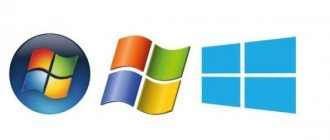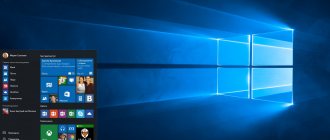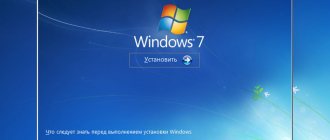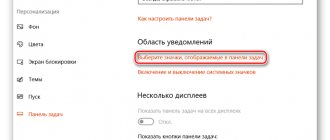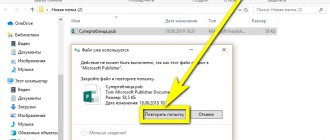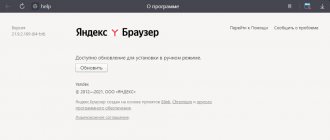Windows 7 is a Microsoft operating system of the Windows NT family, officially released on October 22, 2009. The Windows 7 operating system has several editions that differ in functionality.
Windows 7 was released shortly after the release of the Windows Vista operating system, which was received coolly by users. Essentially, the new Windows 7 was a modified version of Windows Vista.
A few years later, in October 2012, Windows 7 was replaced by the Windows 8 operating system. Then, the Windows 8.1 and Windows 10 operating systems were released successively.
Despite the release of newer operating systems, the “Seven” still remains one of the most popular OS in the world. Only recently, the Windows 10 operating system, despite the possibility of free updates, was able to surpass Windows 7 in terms of the number of users in the world. At the present time, in Russia both operating systems are installed on approximately the same number of computers.
Microsoft has announced that extended support for Windows 7 will end on January 14, 2022. PCs running Windows 7 will continue to work, but will no longer receive security updates and operating system patches.
In this article you will find a comparison of versions of Windows 7 between different editions of the operating system, which I have compiled in a table.
Windows 7 versions
The Windows 7 operating system has several editions aimed at performing different tasks. Some versions are designed for installation on desktop computers, laptops and netbooks by device manufacturers; the PC is sold together with the installed operating system. Other editions are available for retail sale to users who independently install the system on their computer.
Windows 7 was released in 6 editions, differing from each other in their functionality:
- Windows 7 Starter - Windows 7 Initial;
- Windows 7 Home Basic - Windows 7 Home Basic;
- Windows 7 Home Premium - Windows 7 Home Premium;
- Windows 7 Professional - Windows 7 Professional;
- Windows 7 Enterprise - Windows 7 Corporate;
- Windows 7 Ultimate - Windows 7 Maximum.
The Starter edition of Windows 7 was released in the OEM version (for installation on devices by product manufacturers) only in a 32-bit system. Other editions of Windows have 32 bit and 64 bit versions.
Older versions of Windows 7 have Windows XP Mode, which includes the Windows XP Professional operating system running in a Microsoft virtual machine.
Service Pack 1 was released for Windows 7; subsequently, the system received cumulative and cumulative updates, mainly related to computer security.
Home Basic
It’s also called “Home Basic”. In terms of functionality, it is not very different from the initial edition, but there are some changes. For example, there is Windows 7 64 Russian version. It's not exactly a dramatic change, but 64-bit systems work much better with modern hardware. It is also possible to play videos of any format. However, there is still no Aero interface. There is also no Internet sharing or window previews in the taskbar. This version of Windows is being shipped to developing countries. These include Russia and the CIS countries at Microsoft. This edition of the operating system is designed for weak computers and laptops.
The home basic version of Windows 7 is good for housewives who, apart from TV series and Odnoklassniki, don’t need anything else. It is not suitable for serious users. A significant disadvantage is also the inability to run old applications. Please use only new ones. And I would like to see the proprietary “Aero” interface in this edition. But he’s still not there. The home base edition of Windows 7 is definitely not worth the money Microsoft is asking for it. Therefore, let's move on to other editions of the operating system.
How to find out the version of Windows 7
If the user does not know which edition of Windows 7 is installed on his computer, there are several ways to obtain the necessary information. Read the article on how to find out the version of Windows published on my website.
Here is one way to find out the edition of Windows 7:
- Go to the Start menu.
- Right-click on “Computer” and select “Properties” from the context menu.
- The View Basic Information About Your PC window will display information about your Windows edition and some PC specifications.
Pay attention to the bitness of the operating system: 32-bit or 64-bit Windows. This may be needed when reinstalling the system, installing drivers, selecting programs of the appropriate bit depth, etc.
Professional
Version for “professionals”. At the time of Windows XP, this edition was considered the most advanced. But times are changing. And now she is just one of many. The main feature of this edition is the presence of built-in file encryption software. The full version of Windows 7 Professional also supports automatic creation of system restore points, the ability to run legacy programs using the system compatibility option, and the ability to use remote computer access. The Pro version also boasts greater multimedia capabilities. This operating system is already more attractive than other “stripped-down” editions. However, its license costs a lot. However, there are a bunch of builds with different versions on torrents.
The professional edition of Windows 7 is ideal for business. The whole point here is the ability to encrypt data and the normal operation of the system recovery utility. Doing business requires protecting user data at the highest level. Therefore, there is no way to do without encryption. Also, the user must be guaranteed complete safety of his data. And if Windows unexpectedly crashes (and this often happens with Microsoft products), then you can quickly restore the operating system using the recovery utility without losing important data. However, there are several more versions of Windows that deserve attention.
Windows 7 Starter
The Windows 7 Starter edition is designed for installation on netbooks. Quite a lot of functionality has been removed from the operating system in order to make it easier to use this edition on low-power computers.
The initial version is not intended for retail sale. The operating system is installed on the computer by assemblers or device manufacturers.
You may also be interested in:
- Installing Windows 7
- Reinstalling Windows 7 while saving data and programs
Ultimate
She is also “Maximum”. As the name suggests, it should have everything possible. And indeed it is. This edition allows you to copy content to network drives, has even greater multimedia capabilities, includes BitLocker, can work with encryption, includes more than thirty language packs and has a User Account Control option (those annoying pop-ups that appear when attempt to install any program and are asked to confirm the action). Windows 7 64, the latest version of the "Ultimate" edition, works much better with the hardware, is able to see a fairly large amount of RAM and has certain system registry tweaks designed for performance. The maximum edition of the operating system gives the user access to all the functions of the Seven. But the license is quite expensive. It's unfortunate.
The maximum edition of Windows 7 is ideal for upgrading, overclocking and other abuses of your computer. It is this version of the operating system that supports new hardware. By the way, programs for overclocking the processor and video card will not work on operating systems of other editions. It is unknown why. Therefore, true gamers prefer the “Maximum” version of Windows 7. And the high price of a licensed product does not stop them at all. Apparently, this is where some fanaticism of game lovers manifests itself.
Windows 7 comparison of editions: table
The summary table contains the main characteristics of all editions of Windows 7: Windows 7 Starter, Windows 7 Home Basic, Windows 7 Home Premium, Windows 7 Professional, Windows 7 Enterprise, Windows 7 Ultimate.
This table has horizontal scrolling due to the fact that all columns do not fit the width of the article.
| Editorial staff | Windows 7 Starter | Windows 7 Home Basic | Windows 7 Home Premium | Windows 7 Professional | Windows 7 Ultimate | Windows 7 Enterprise |
| Distribution method | OEM licenses | Retail and OEM licenses | Retail and OEM licenses | Retail, OEM licenses, corporate licenses | Retail and OEM licenses | Corporate licenses |
| Maximum physical memory (32-bit) | 2GB | 4GB | 4GB | 4GB | 4GB | 4GB |
| Maximum physical memory (64-bit) | No | 8GB | 16 GB | 192GB | 192GB | 192GB |
| 64-bit version | No | Yes, only in OEM version | Yes | Yes | Yes | Yes |
| Number of physical processors | 1 | 1 | 1 | 2 | 2 | 2 |
| Windows Recovery Center | No domain support | No domain support | No domain support | Yes | Yes | Yes |
| Home group | Join only | Join only | Yes | Yes | Yes | Yes |
| Remote Desktop | Client only | Client only | Client only | Yes | Yes | Yes |
| Multiple monitors | No | Yes | Yes | Yes | Yes | Yes |
| Fast user switching | No | Yes | Yes | Yes | Yes | Yes |
| Windows Aero | No | Basic theme | Yes | Yes | Yes | Yes |
| Changing the desktop background image | No | Yes | Yes | Yes | Yes | Yes |
| Desktop Window Manager | No | Yes | Yes | Yes | Yes | Yes |
| Mobility Center | No | Yes | Yes | Yes | Yes | Yes |
| Multi-touch support | No | No | Yes | Yes | Yes | Yes |
| Online Games | No | No | Yes | Yes, disabled | Yes | Yes, disabled |
| Windows Media Center | No | No | Yes | Yes | Yes | Yes |
| Windows DVD Maker | No | No | Yes | Yes | Yes | Yes |
| Parental control | Yes | Yes | Yes | Yes | Yes | Yes |
| Windows Defender | Yes | Yes | Yes | Yes | Yes | Yes |
| Windows Firewall | Yes | Yes | Yes | Yes | Yes | Yes |
| EFS (Encrypting File System) | No | No | No | Yes | Yes | Yes |
| Print based on network location | No | No | No | Yes | Yes | Yes |
| Presentation mode | No | No | No | Yes | Yes | Yes |
| Joining a Windows Domain | No | No | No | Yes | Yes | Yes |
| Windows XP Mode | No | No | No | Yes | Yes | Yes |
| Software Restriction Policies | No | No | No | Yes | Yes | Yes |
| AppLocker | No | No | No | No | Yes | Yes |
| BitLocker | No | No | No | No | Yes | Yes |
| BitLocker To Go | No | No | No | No | Yes | Yes |
| BranchCache | No | No | No | No | Yes | Yes |
| DirectAccess | No | No | No | No | Yes | Yes |
| Subsystem for UNIX applications | No | No | No | No | Yes | Yes |
| Multilingual User Interface Pack | No | No | No | No | Yes | Yes |
| Creating and connecting VHD | Yes | Yes | Yes | Yes | Yes | Yes |
| Boot from VHD | No | No | No | No | Yes | Yes |
| Launching system snap-ins | No | No | No | Yes | Yes | Yes |
Home Premium
Here we are already seeing the emergence of a 64-bit version for more powerful computers that support 64-bit architecture, or in other words, quad-core processors. There are more graphical options, such as enabling the Aero
and automatic change of desktop wallpaper. It is possible to create and play DVD discs. A fully functional Windows Media Center has appeared. There is support for multiple monitors, scissors (I’ve never used them and I don’t even understand what to cut with them), notes. There is support for tablet computers. In principle, this is a more complete version of the operating system. And you can already think about buying it.
Conclusion: suitable for more powerful computers and laptops. Not bad for games.
Enterprise
The corporate edition is the same one that is not published for Russia. It has all the functionality of the “Maximum” version. However, it also has additional network functionality. But its potential is revealed only when working in large corporations on a decent number of computers. Is it worth mentioning that the license for this version of Windows costs fabulous money? And there are no discounts for bulk purchases. The latest Russian version of Windows 7 Enterprise is a mythical unicorn that does not exist in nature. An operating system of this kind can only be found on torrent trackers in the form of a pirated build. But it's free. However, using pirated assemblies is strongly discouraged, since it is unknown what the creator of the assembly “put” there. It is still better to use licensed software. This is the only way to be sure that no one is watching you. Although with the release of the “tens” the last statement became quite controversial.
The enterprise version of Windows 7 (latest version) features increased security for network connections. This is vital for large corporations, since there are quite a lot of attackers who want to take over confidential data. In the USA and Europe, the share of Windows 7 in the corporate segment is still quite high. Despite the fact that the company announced the end of support for the product. But the “seven” will still be alive as long as the corporate sector sits on it. But with the eighth version of Windows, the issue has already been resolved. Just last week, Microsoft management announced that support for versions 8 and 8.1 has officially ended. This is exactly how the company from Redmond is trying to force all users to switch to “Ten”. The same operating system with spyware tendencies.
Which edition should I choose for home use?
It all depends on the specific tasks that will need to be solved using a personal computer. For most users, the “Home Premium” edition is sufficient. But she doesn’t know how to run old programs at all. In general, it is recommended to set it to “Maximum”. Then you won't have to suffer with unsupported applications. Also, using the maximum edition is quite justified from a performance point of view. And there will be no problems when updating the computer configuration, since the “Maximum” version works perfectly with the equipment and can detect new components. Let's not forget about the possibility of restoring the system from a checkpoint. Sometimes it is simply necessary. Versions of Windows 7 differ in the set of options and options for working with equipment. That's all. But from the user's side, this behavior seems outrageous. This is understandable. Who wants to use a “stripped down” operating system?
However, if you are the owner of a game server, then all of the above editions (even Windows 7, the latest version) will not suit your needs. Here you will need to install a special version - Server Edition. Although knowledgeable administrators prefer to use server editions of Linux distributions (especially Debian) for these needs. They are more secure, stable and always work correctly with the network. And the latter is very important for the server administrator.
There is also a special assembly - Windows 7 Flash version. There is nothing unusual about her. It's just an operating system that can be installed from a USB drive. Now many people use this installation method, since the reading speed of a USB port is much faster than reading from a regular disk. Moreover, versions of Windows 10 are now distributed in digital form for subsequent installation from any drive.
System innovations
The seventh version of Windows OS introduced special features that were not present in previous systems.
Windows applocker
This setting is present only in the most advanced versions of the "seven", it determines the user access policy to OS files. AppLocker is also present in later versions - Windows 8 and 10.
Windows applocker technology
This technology is especially aimed at system administrators and experienced users; it is possible to create clear, well-thought-out security policies.
For example, you can restrict the execution of certain executable files (“.exe”) on the system, and the basis for the prohibition may be the name, version of the program, or its digital signature.
Windows media player
The new player is linked to the Windows Media Library and allows you to play most music and video files.
During the first launch, you will be prompted to configure the settings; it is better to select the default settings.
Recommended default settings for Windows media player
The multimedia library is presented in groups:
- music;
- video;
- Images;
- TV recordings;
- playlists.
Media library with groups in it
Windows branch cache
This technology allows you to create a local network cache, where frequently used data is stored, that is, those that are often accessed by local network users.
The only catch is that both the server and all clients must support the branchcache method.
Windows media center
This is a whole entertainment complex that allows you to watch TV (if there is a tuner), video, listen to music, and make recordings on optical media.
The software is also capable of synchronizing multimedia files with some mobile devices, for example, Windows Mobile Pocket PC, Portable Media Center, tablets.
The software is capable of synchronizing multimedia files
Windows touch
To use this feature, your system must support it. That is, it should be possible to perform touch input using fingers or a stylus.
Windows touch - a touch-enabled feature
Using gestures you can do:
- scrolling the screen content;
- scaling;
- many other gestures are supported.
Video - Improved written input system
Windows slideshow
This feature allows you to view photos or any other images as a slideshow.
Windows slideshow - a program for viewing images in slideshow mode
Moreover, this action is possible both on the main and additional monitor.
Windows mobility center: presentation mode
Another new built-in feature is to transfer images to an external projector from the system.
This can be useful when creating presentations.
Windows bitlocker and also bitlocker to go
The ability to protect information is useful for encrypting files, including those on removable media.
After encrypting directories, you can work with them only after entering the password.
Scissors, notes, windows journal
Windows 7 introduced such a useful feature as “Scissors”. Now, in addition to regular screenshots, you can select and copy arbitrary screen fragments to the clipboard, and then create image files.
Snipping function for taking screenshots
And the “Notes” application allows you to take notes without creating separate text files, and the text will be attached to the working window of the system.
These are a kind of temporary notes. You can create several of them.
Sticky Notes app for notes
Windows xp mode
Applications that worked in Windows XP may not be supported in future versions of the system.
However, Windows 7's built-in tools allow you to run them in compatibility mode.
Windows XP mode is a virtual machine designed to run “old” applications with support for the appropriate drivers.
Windows XP mode is a virtual machine used to run “old” applications
Is it worth updating the OS to the latest version?
This is a controversial issue. More recently, a serious vulnerability was identified in processors (both Intel and AMD). In this regard, the developers of Linux distributions quickly began to release security updates. And if everything is fine with Linux after the update, then the comrades from Microsoft screwed it up. The latest Russian version of Windows 7 (if updated to it through the Update Center) takes the system to the “blue screen of death”. Here's a security update for you. They also say that Microsoft employs professionals of the highest level. In operating systems such as Linux or MacOS, such a situation is even impossible to imagine. But these guys were able to distinguish themselves.
Therefore, if you currently have Windows 7 installed, the old version works quite normally and there are no glitches, then do not even think about upgrading. As a result, you will have to reinstall the entire operating system. Wait a little, and the Redmond programmers will find their mistake and fix it. In the meantime, you can completely sit on the old version. Moreover, if it works quite stably for you. As for processor vulnerabilities, just put it out of your mind. Your computer and personal photos from the sea are of no interest to attackers. You're not a celebrity, right?

